#Taklamakan Desert
Explore tagged Tumblr posts
Text
youtube
Smuggling Domesticated Silkworms along the Silk Roads, Curator's Corner S9 Ep 8: The Silk Princess, September 26, 2024
At some point around AD 600-700, a legend started spreading about a princess who snuck mulberry tree seeds and silkworm eggs into the Buddhist kingdom of Khotan (present-day northwest China). Sericulture, the ancient Chinese technique of silk farming, had been kept a secret for thousands of years. Integral to this technique were silkworms that had been bred to evolve into moths without wings, and needed a strict diet of white mulberry tree leaves (morus alba). Khotan desperately wanted access to this incredibly lucrative business, and so a political marriage (with a little act of matrimonial smuggling) was arranged with a princess from a nearby 'eastern kingdom'. The princess hid mulberry tree seeds and silkworm eggs in her headdress, crossed the border, married the king, introduced sericulture to her new kingdom, guaranteed that her wardrobe was continually updated with fresh silk robes and eventually became a venerated figure of near-saintly status - not bad for a single day's smuggling? Join curator Yu-ping Luk for a legendary journey along the Silk Roads. The British Museum
#Luk Yu Ping#British Museum#art#art history#sericulture#technology#Khotan#Saka#Silk Road#Taklamakan Desert#Tarim Basin#labour#painting#figure#history#folklore#archaeology#Buddhism
50 notes
·
View notes
Text
Will the Tarim Basin mummies ever not be fascinating and kind of weird? No, they will not and I'm here for it.
73 notes
·
View notes
Text
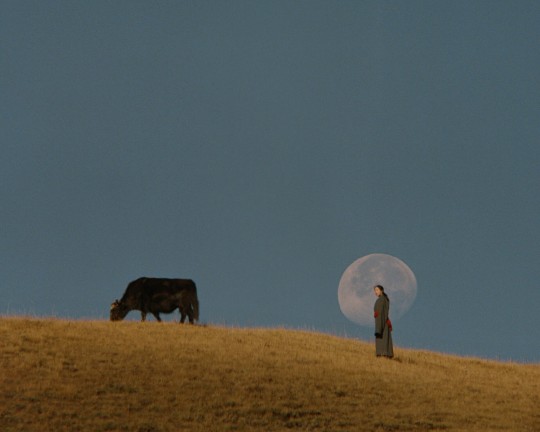
In ‘Dyal Thak,’ Photographer Kin Coedel Offers an Intimate Glimpse of Life on the Rapidly Changing Tibetan Plateau
Nestled between the Himalayas and the Taklamakan Desert, the Tibetan Plateau is sometimes referred to as the “third pole.” The vast region harbors the largest source of fresh water outside the arctic and supplies 20 percent of the global population with the vital resource.


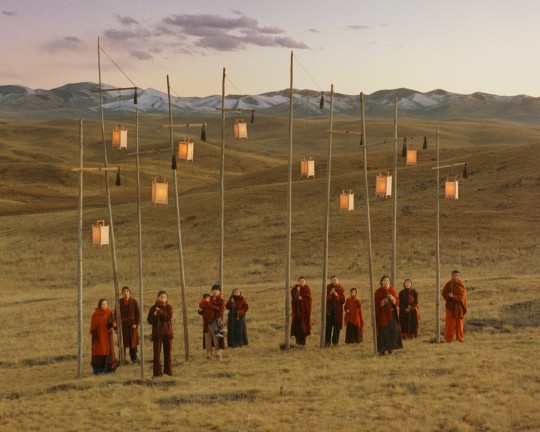
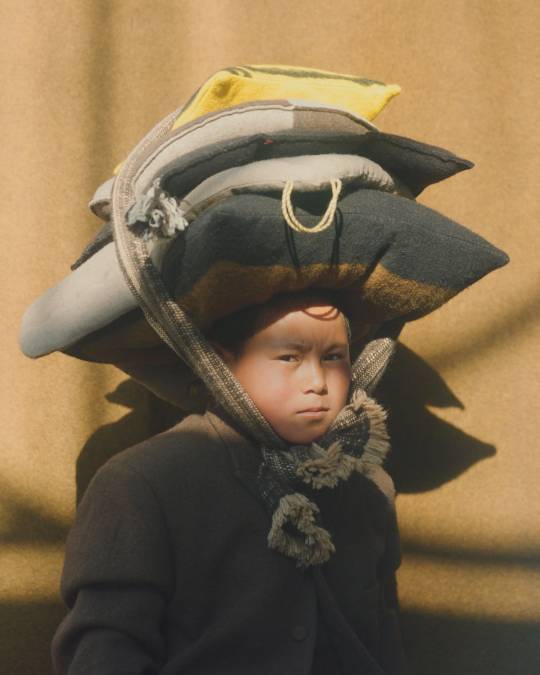
2 notes
·
View notes
Text
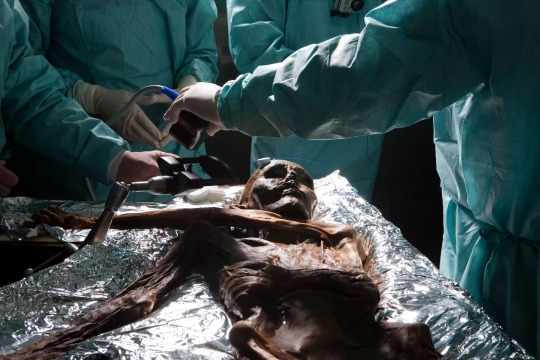
Brain samples are taken from the Copper-Age Mummy Ötzi, who was encased in ice shortly after death. This Natural Mummification preserved the body for some 5,000 years before its discovery in 1991. Photograph By Robert Clark, National Geographic Image Collection
These Mummies Were Made … By Accident?
Freeze-dried, salted, or buried in a bog: Thousands of years before humans intentionally mummified their dead, nature took care of it for them.
— By Elise Cutts | August 7, 2023
A mummy isn’t exactly something one would expect to make by accident.
Left to nature, a human body would usually be reduced to bones within a few years. Mummy-making cultures like the ancient Egyptians were only able to stave off the inevitable thanks to complex funerary practices involving all manner of specialized tools, chemicals, and procedures.
But there are paths to mummified eternity that don’t involve canopic jars, natron salts, or brain-removing hooks. In fact, some of the oldest Egyptian mummies were likely accidents, says Frank Rühli, director of the University of Zurich’s Institute of Evolutionary Medicine and head of the Paleopathology and Mummy Studies Group.
Buried in shallow graves, bodies can be naturally preserved for thousands of years by the dry heat of the Sahara’s desert air and sand. Rühli says he believes this could have inspired ancient Egyptians to start mummifying their honored dead.
Hot deserts are just one of many environments in which corpses naturally mummify. Scientists explain how environments ranging from bogs to icy mountaintops can stave off decay and—with a bit of luck—mummify bodies.
Deserts
The Egyptians aren’t the only desert culture known for their mummies. The Chinchorro people of northern Chile started to intentionally mummify their dead about 2,000 years before the Egyptians—and thousands of years before that, the Atacama Desert was doing it for them.
“One of the things that's interesting about the Chinchorro mummies is that some of them were intentionally prepared, while other were naturally mummified,” says physical anthropologist Bernardo Arriaza of the University of Tarapacá in Chile, who spent his career studying the Chinchorro mummies.
A bone-dry corpse, perhaps ironically, will likely leave more than bones.
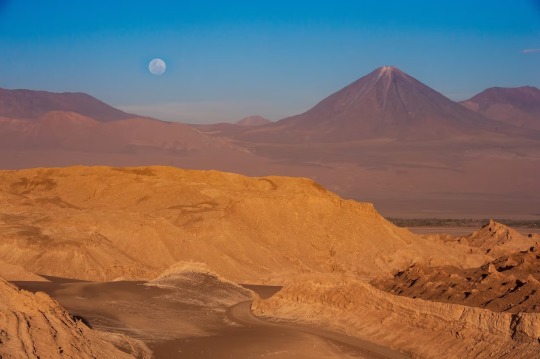
A Landscape of the Desert! The Atacama desert plateau is one of the driest places in the World. Mummies have been found here that predate ancient Egypt’s by 2,000 years. Photograph By Naftali Hilger, Laif/Redux
Decay is a biological process and without water, biology can’t work. This is why deserts preserve bodies so well and why Egyptian and Chinchorro mummification practices involved steps to dry out the body.
The oldest Chinchorro mummy, Acha Man, was naturally preserved by the desert for more than 9,000 years. Natural mummies have been found in deserts around the world. Among the most well-preserved are the Tarim mummies of Xinjiang, China, who were buried in boat-shaped coffins up to 4,000 years ago in the Taklamakan Desert.
Salt
For a handful unfortunate Iranian miners caught in cave-ins at the Chehrabad salt mine, salt did the job just as well as deserts.
"They were working in the salt mine and then it collapsed,” says Rühli, who studied the mummies. This actually happened multiple times—at least twice, says Rühli—over about 1000 years, entombing young men separated from one another by centuries in the salt they’d come to mine. Though the weight of the salt crushed the miners, flattening their corpses, the salty rock drew the water out of their bodies and mummified their squashed remains.
Salts in the dry soils of the Atacama Desert also helped preserve the Chinchorro mummies, says Arriaza. The soils are rich in nitrate compounds, nitrogen, potassium, sodium, calcium. “Mostly salts,” he says. “That's going to help dehydrate the body.”
Ice
Removing the water from a corpse isn’t the only way to stop decay. Low temperatures slow down most biological processes, and freezing a body completely can keep it from rotting for thousands of years.
Pathologist Andreas Nerlich of the Munich Klinik Bogenhausen studied Ötzi, a 5,300-year-old ice mummy who was found poking out of melting glacier ice in the Ötztal alps near the Austrian-Italian border. “They're preserved as long as the ice is there,” he says of mummies like Ötzi.
While “very rare,” adds Nerlich, ice mummies like Ötzi can be remarkably well-preserved compared to dehydrated mummies. That’s because dehydration shrivels and distorts tissues, but frozen organs mostly keep their shape.
Permafrost, earth that remains frozen year-round, can also mummify. One Siberian mummy, the 2,500 year-old Ice Maiden, was quite literally frozen in a block of ice after her burial chamber flooded and the water quickly froze. Because her burial chamber was constructed from permafrost earth, the ice that formed inside never melted.
Freeze-Drying
Combining cold and dry conditions can mummify bodies even when it’s not consistently chilly enough to keep a body frozen year-round. That’s what happened to a handful of Thule Inuit women and children in Greenland. They were naturally mummified in their graves after their deaths, likely caused by famine or disease, in the 15th and 16th centuries.
It’s a bit like natural freeze-drying, says paleopathologist Niels Lynnerup of the University of Copenhagen, who studied the mummies.
“Even though it's very cold in Greenland, it's not like it's in the high Arctic with permafrost,” he says. The bodies were buried under rocky covers or cairns, so “they still had wind blowing through.” The wind desiccated the bodies and, combined with the bacteria-slowing effect of cold temperatures, mummified them.
Many of the Inca mummies discovered high on Andean mountaintops were preserved by freeze-drying, too. The exceptionally well-preserved Maiden of Llullaillaco, the mummy of a teenage Inca girl left to succumb to cold on an Andean mountaintop as a sacrifice, is a unique case as she was frozen solid.
Even the conditions in cool, dry crypts can sometimes preserve remains in a similar way so long as bodies are either well-ventilated or kept under airtight conditions after being dried out, says Nerlich. Several natural mummies in crypts weren’t entirely accidents. One Upper Austrian mummy known as the Luftg’selchter Pfarrer was intentionally stuffed with water-absorbing materials and treated with salts to delay decay temporarily before he naturally mummified in his crypt.
Bogs
Natural mummification almost always involves somehow getting rid of water, either by removing it entirely or turning it into ice. So may be a bit surprising that wet, swampy bogs can preserve human remains for millennia.
The oldest bog mummy is Cashel Man, who was probably killed in a sacrifice around 2,000 B.C. His body was naturally mummified because of the unusual chemical conditions in bogs.
“There are several factors which cause human remains to be mummified in bogs,” says archaeologist Isabella Mulhall of the National Museum of Ireland. “The lack of oxygen, the cool dark environment… the [acidity] levels of the bog also has a role to play.”
A type of moss often found in bogs also helps mummify bodies, Mulhall adds. Sphagnum moss releases an acidic sugary molecule called sphagnan, which takes up the nutrients that would otherwise nourish microbes that cause decay. This helps mummify corpses—though sphagnan also leaches the calcium out of bones, weakening them.
The acidic fluids in bogs chemically alter the body, not unlike leather tanning or pickling. That’s why most bog bodies, no matter how they looked in life, have dark, leathery skin and bright red hair.
Many bog bodies appear to have met rather violent ends—a fate shared with many other natural mummies. But because luck happened to preserve their bodies, the victims of these ancient tragedies can still tell scientists about themselves and their societies. The same processes that mummify human skin and organs can also sometimes preserve undigested food in the stomach, blood, traces of disease-causing microbes, and even clues about the ecosystems and climates that ancient people lived in.
“In a sense,” says Arriaza, “all these ancient remains are time capsules.”
#Science#Copper-Age Mummy Ötzi#Natural Mummification#Robert Clark#National Geographic Image Collection#Freeze-Dried#Salted#Elise Cutts#University of Zurich’s Institute of Evolutionary Medicine#Paleopathology#Frank Rühli#Egyptians#Chinchorro people of Northern Chile 🇨🇱#Atacama Desert 🐪 🌵#Physical Anthropologist Bernardo Arriaza#University of Tarapacá Chile 🇨🇱#Egyptian & Chinchorro Mummification Practices#Acha Man#Taklamakan Desert#Chehrabad Salt Mine#Nitrogen | Potassium | Sodium | Calcium | Salts#Pathologist Andreas Nerlich | Munich Klinik Bogenhausen#Permafrost#Niels Lynnerup | University of Copenhagen#Thule Inuit Women & Children | Greenland 🇬🇱#Isabella Mulhall | The National Museum of Ireland 🇮🇪#Cashel Man
2 notes
·
View notes
Text

The Science Research Manuscripts of S. Sunkavally, p 795.
#UDP carrier#undecaprenyl phosphate#gorilla#melanin#vitamin D synthesis#butterflies#Sahara Desert#Taklamakan Desert#fragile X-syndrome#insects#surface tension#walking on water#magnetotactic bacteria#lysozyme#paramecia
1 note
·
View note
Text

重新造林 塔克拉玛干沙漠 - The Taklamakan Desert - Reforested
potential for an oasis
0 notes
Text
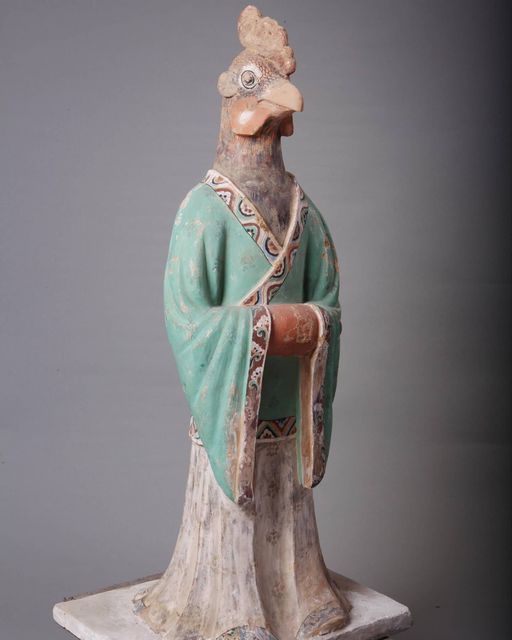
Sculpture with rooster head, was found in a tomb at Gaochang, a Tang city on the edge of the Taklamakan Desert, 7th-10th century, Tang Dynasty, China.
6K notes
·
View notes
Text
China Completes It's "Great Green Wall" to Combat Desertification

Image and text from this Reuter's article:
China has finished a 46-year campaign to encircle its largest desert with trees, part of national efforts to end desertification and curb the sandstorms that plague parts of the country during the spring, state media reported on Friday. A "green belt" of about 3,000 km (2,000 miles) around the Taklamakan was completed on Thursday in the northwestern region of Xinjiang, after workers planted the final 100 metres of trees on the desert's southern edge, the Communist Party-run People's Daily said. Efforts to enclose the desert with trees began in 1978 with the launch of China's "Three-North Shelterbelt" project, colloquially known as the Great Green Wall. More than 30 million hectares (116,000 square miles) of trees have been planted. Tree planting in the arid northwest has helped bring China's total forest coverage above 25% by the end of last year, up from around 10% in 1949. Forest coverage in Xinjiang alone has risen from 1% to 5% in the last 40 years, the People's Daily said.
#desertification#trees#reforestation#great green wall#habitat restoration#habitat#ecology#environment#climate change#global warming#good news#hope
1K notes
·
View notes
Text
7. There actually are people living there but those don't count apparently because there's no major cities
7.1 There are no major cities because theres not enough resources or strategic value to the area to bother building one
All those videos that are like “Why is this big area of this country uninhabited???” always have five reasons it might be.
It’s really cold
It’s really hot
Big mountains are hard to build on
No water and humans generally need that
All four of the above all at once
#if you zoom in on the taklamakan desert in westernbchina there are actually a ton of little villages#same for the sahara and arabian deserts#as well as the atacama and gobi#and the entire united states southwest#same goes for siberia and other similarly rugged and cold environments
11K notes
·
View notes
Text

8th century Judeo-Persian letter from Dandan-Uiliq, the abandoned historic oasis town in the Taklamakan Desert of Xinjiang, China.
The letter is from a Khotan Jew to the ‘lord master’ Nisi Chilag, Abu Sahak and others on the subject of sheep trading. It lists bribes to officials, arranged no doubt in order of sociological importance and headed by a local ruler (dihgān) who can perhaps be identified with the King of Khotan or someone of equal status. The gifts include a vase, scent, silk cloth, raw silk, sugar and other items which are not yet fully understood. Perhaps the most important information was the news from Kashgar that “They killed and captured all the Tibetans”. The writer himself contributed “a sum worth 100 strings of coins, or 100,000 coins” for the war effort.
163 notes
·
View notes
Text

dead poplar tree after sunset, taklamakan desert [1294x1949] [oc] - Author: neko_ramen
131 notes
·
View notes
Text

Uyghur princes wearing Chinese-styled robes and headgear, Bezeklik Cave 9, 9–12th century CE. The Bezeklik Thousand Buddha Caves (Chinese: 柏孜克里克千佛洞; pinyin: Bózīkèlǐkè Qiānfódòng; Uyghur: بزقلیق مىڭ ئۆيى) are a group of Buddhist cave temples carved between the 5th and 14th centuries. They are located between Turpan and Shanshan (Loulan), in the northeastern part of the Taklamakan Desert, near the ancient city of Gaochang. Situated high along the cliffs of the western Mutou Valley in the Flaming Mountains of Xinjiang, western China, most of the remaining caves date from the West Uyghur Kingdom, spanning roughly the 10th to 13th centuries.
#china#chinese history#turkic#turkish#turkic people#chinese art#buddhism#buddhist#buddhist history#buddhist art#bezeklik#uyghur#uyghurs#uyghur culture#medieval#middle ages#medieval history#medieval art#asia#asian history#asian art
46 notes
·
View notes
Text

In ‘Dyal Thak,’ Photographer Kin Coedel Offers an Intimate Glimpse of Life on the Rapidly Changing Tibetan Plateau
Nestled between the Himalayas and the Taklamakan Desert, the Tibetan Plateau is sometimes referred to as the “third pole.” The vast region harbors the largest source of fresh water outside the arctic and supplies 20 percent of the global population with the vital resource.



2 notes
·
View notes
Note
there was Chinese interest in the Out Of Asia theory, in both the Republic, Chiang Republic and People’s Republic periods before the Out Of Africa theory became commonly accepted. Was the 1954 Yeti expedition done just from the Nepalese-Indian side or were the American agents and “anthropologists” given access on the Sino-Tibetan side of the Himalayan border?
During the early part of this century, it was absolutely believed for a long time that the deserts of Western China were the most likely place of human origins, as seen in this migration map from 1944, made from the best available knowledge of the time:

Remember, the oldest fossil remains at this point were in China, where Homo erectus was discovered (originally known by his initial place of discovery in Chungkotien Cave, nicknamed "Peking Man"). The discovery of Australopithecus and Homo habilis in Olduvai Gorge and South Africa, which place human origins in Africa, were not until the 50s and 60s, so it seemed entirely reasonable that Homo sapiens evolved in Western China.
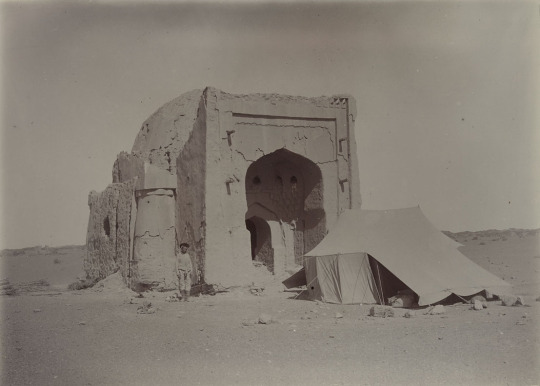
The idea that China's desert regions were the origin of modern humans and culture is seen a lot in pop culture from 1900-1950, mainly because there were tremendous explorations in the region, especially Aurel Stein's expedition of 1908, who ventured into the Taklamakan Desert to find the Dunhuang Caves and Khara-Khoto, a city destroyed completely by Genghis Khan and vanished in the desert.

If you've ever heard of Roy Chapman Andrews and his famous expeditions in the 1920s, it's worth noting that he ventured into the Gobi Desert looking for human remains....not dinosaurs, and the discovery of dinosaur eggs was an unexpected surprise.


For that reason, there was a short lived Silk Road Mania that seemed to be a smaller scale predecessor to the pop culture dominating Egyptomania of the 1920s. It's bizarre to read adventure and fantasy fiction of the 1910s-1920s that features mentions of Silk Road peoples like the Kyrgyz, Sogdians, Tajik, Uigurians, and Tuvans. The best example I can think of would be the Khlit the Kossack stories of Harold Lamb (who also wrote a biography of Tamerlane), which together with Tarzan and Tros of Samothrace, formed the core inspiration for Robert E. Howard's Conan the Barbarian.
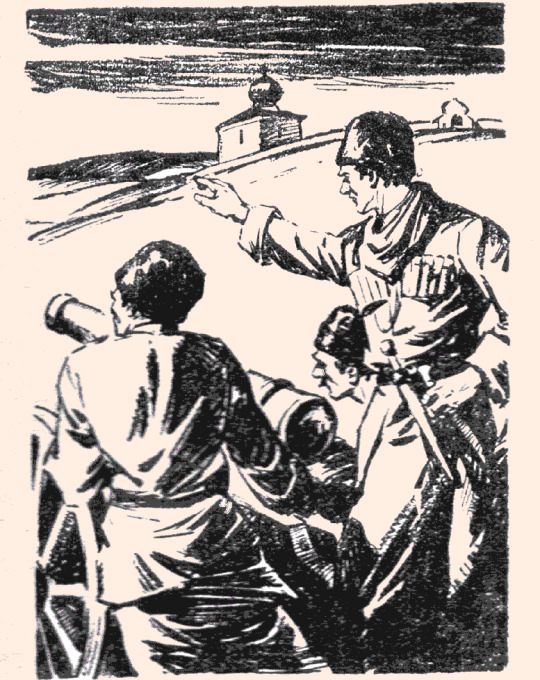
The most interesting example of this would be A. Merritt's Dwellers in the Mirage, which featured a lost city in Xinjiang that was the home of the Nordic race, who worshipped their original religion, the kraken-like squid devil god Khalkru. It was widely believed in this era that Nordics emerged from Central Asia originally, and while it's easy to write this off as turn of the century racialist claptrap pseudohistory (along with Hyperborea legends), in this case, it is actually true: a branch of the Indo-European family lived in West China, and 5,000 year old redheaded mummies have been found in the region. As usual, A. Merritt was right on the money with his archeology, more so than other 1920s authors. After all, his "Moon Pool" was set around the just discovered ruins of Nan Madol, the Venice of Micronesia.

Jack Williamson's still chilling Darker Than You Think in 1948 was also set in the Silk Road/Central Asian region, as the place the race of shapeshifters emerged from, Homo magi, who await the coming of their evil messiah, the Night King, who will give them power over the human race.

H. Rider Haggard set "Ayesha: the Return of She" (1905) in Xinjiang, among a lost Greek colony in Central Asia (no doubt based on Alexandria on the Indus, a Greek colony in modern Pakistan that was the furthest bastion of Greek Culture). This was also two years after the Younghusband Thibetan Expedition of 1903, where the British invaded Tibet. At the time, the Qing Dynasty was completely declining and lost control of the frontier regions, and the power vacuum was filled by religious authority by default (this is something you also saw in Xinjiang, where for example, the leader of the city was the Imam of Kashgar).
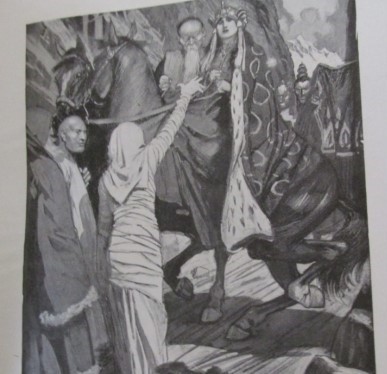
This is one of the many British invasions they have attempted to cram down the memory hole, but if you ever see a Himalayan art piece that was "obtained in 1903-1904" ....well, you know where it came from.
Incidentally, there's one really funny recent conspiracy theory about paleontology, fossils, and China that I find incredibly interesting: the idea that dinosaurs having feathers is a lie and a sinister plot spread by the Communist Chinese (who else?) to make American youth into sissy fancylads, like Jessie "the Body" Ventura. How? By lying to us and making up that the manly and vigorous Tyrannosaurus, a beast with off the charts heterosexuality and a model for boys everywhere, might have been feathered like a debutante's dress. What next - lipstick on a Great White Shark? The long term goal is to make Americans effeminate C. Nelson Reilly types unable to defend against invasion. This is a theory that is getting steam among the kind of people who used to read Soldier of Fortune magazine, and among abusive stepfathers the world over.

...okay, are you done laughing? Yeah, this is obvious crackpottery and transparent sexual pathology, on the level of the John Birch Society in the 60s saying the Beatles were a Communist mind control plot. Mostly because animals just look how they look, and if it turned out that the ferocious Tyrannosaurus had feathers and looked like a fancylad Jessie Ventura to you, well, that's your problem and mental baggage, really.
I was left scratching my head over this one. But there is (kind of) something to this, and that is that a huge chunk of recent dinosaur discoveries have been in China. I don't think it has anything to do with a Communist plot to turn American boys into fancylads, but more to do with a major push in internal public investment in sciences in that country, and an explosion of Chinese dinosaur discoveries. If you want to see a great undervisited dinosaur museum, go to the Zigong Dinosaur Museum in Sichuan.

Pop quiz: what living scientist has named more dinosaur discoveries? It's not Bakker or Horner. The greatest living paleontologist, Xu Xing, which is why a lot of recently found dinosaurs are named things like Shangtungasaurus.
259 notes
·
View notes
Text
I really love places that have genuinely absolutely nothing. Ever heard of Bouvet island? Taklamakan desert? Lut desert? Devon island? Most of ANTARCTICA?? These places have so much nothing that it loops back around to being some of the most interesting locations on earth!
6 notes
·
View notes
Text


taklamakan desert 🤠🏜️
29 notes
·
View notes